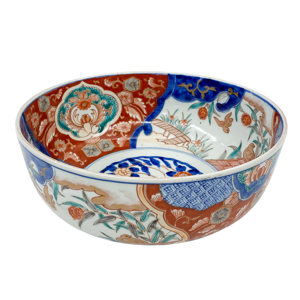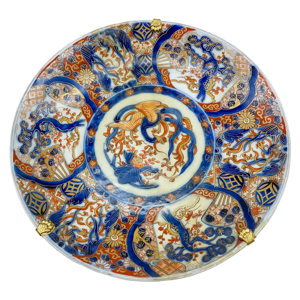Imari porcelain is traditionally produced in the city of Arita from the seventeenth century, thanks to the brilliant intuition of the Korean ceramist Yi Sam-pyeong, deported to Japan together with the family after the invasion of Korea in 1598, who discovered kaolinite, or porcelain clay. Following this discovery, the artisans of Arita, who always produced porcelain in pure Japanese style, also adopted the Korean style, for whose main characteristic, the overmoulding, welcomed the influences of Chinese ceramics.
This was the main export product to Europe (the swan-necked shaped teapots were the most representative and popular piece of this style). Such as porcelains with enamel colors overlaid with cobalt blue or iron oxide red; often very decorated with floral inlays and gilding, in some cases they were decorated with individual decorations. Linked to this technique is the name of the famous artist Sakaida Kakiemon, who greatly influenced the first European porcelain, German, French, and the Netherlands following the importation by the Dutch East India Company in the mid-eighteenth century.




 Text via WhatsApp
Text via WhatsApp